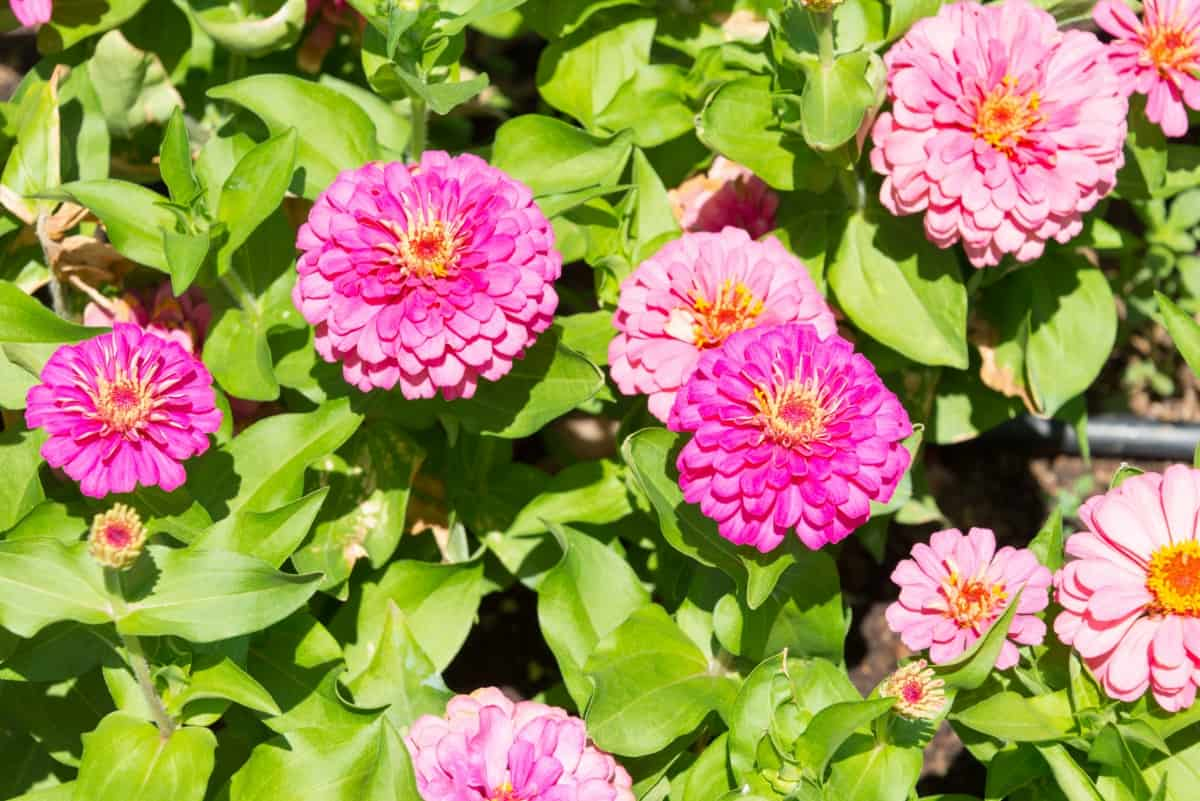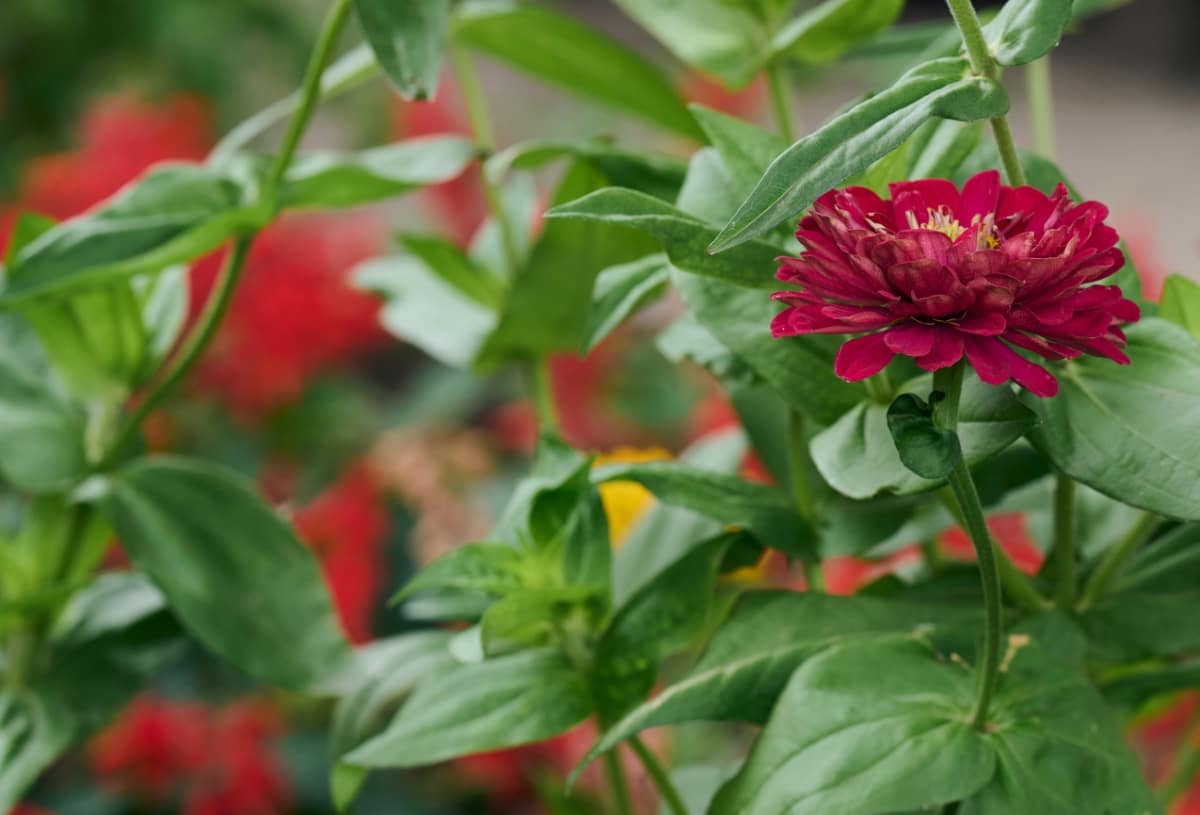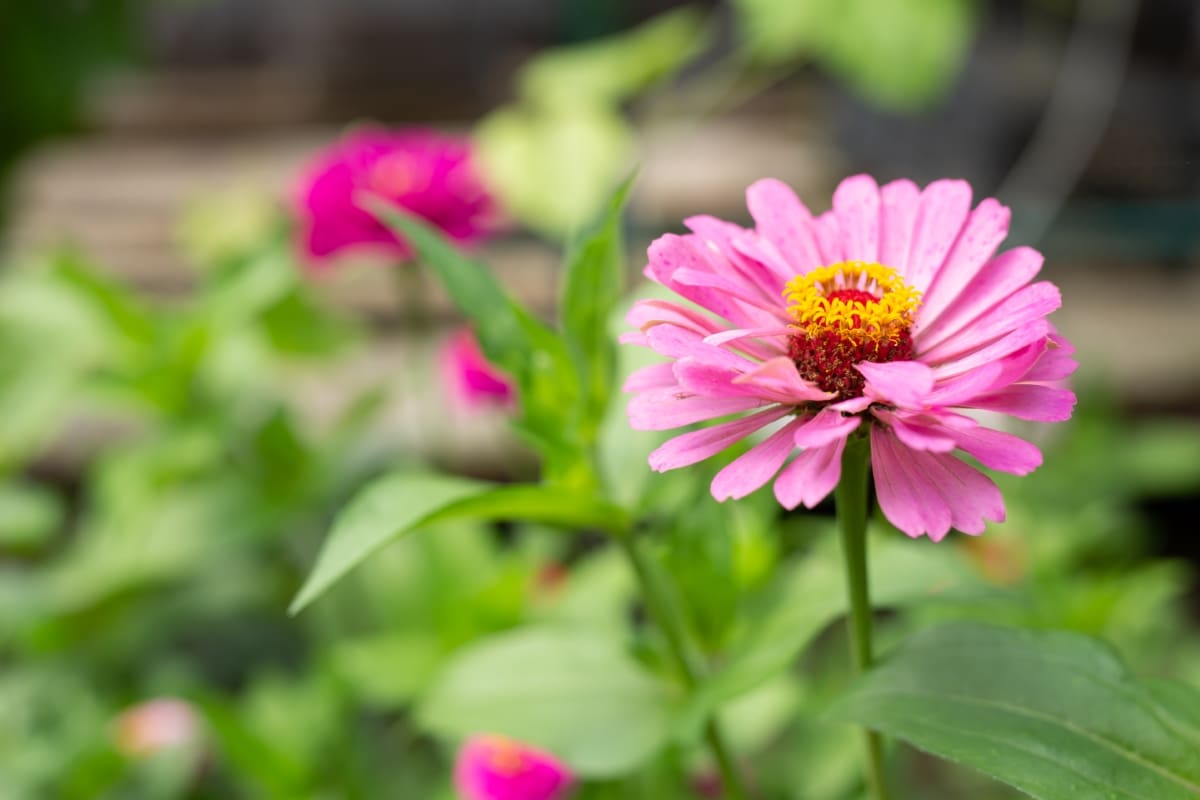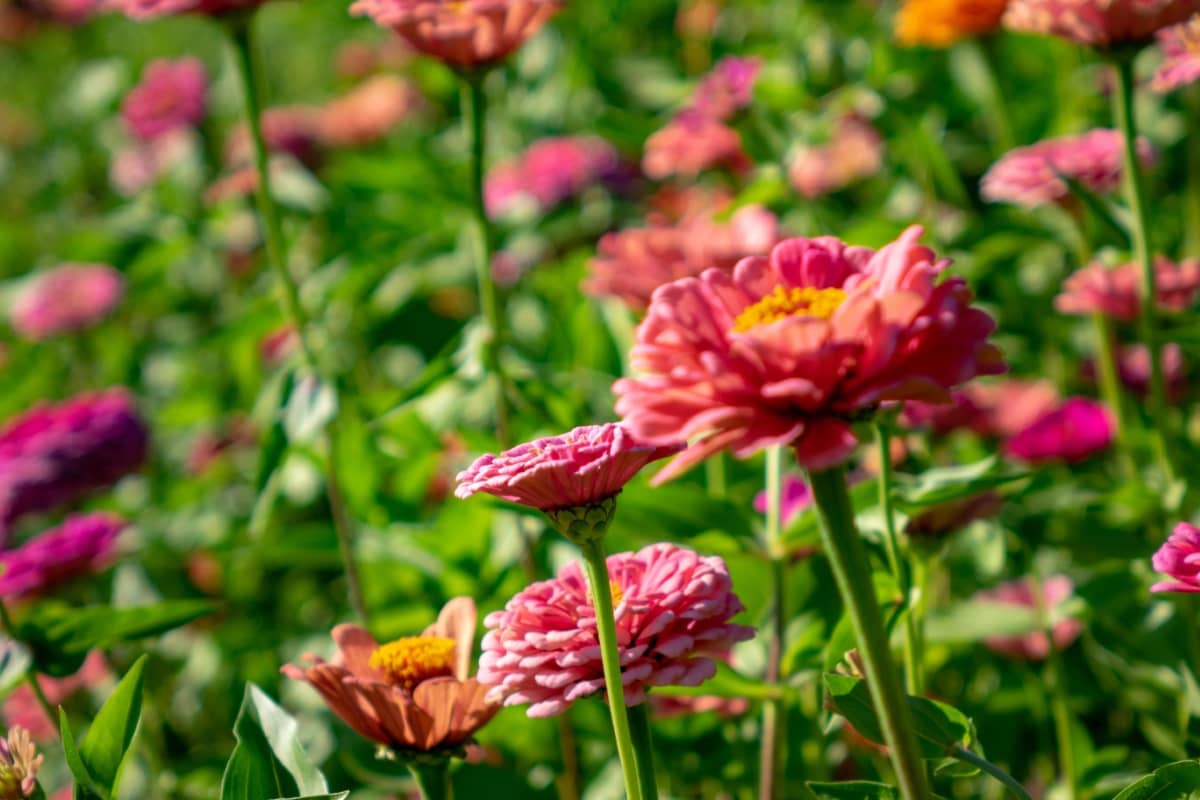These vibrant flowers belong to the genus Heliantheae in the Asteraceae family. With their scientific name being Zinnia sp., these beauties come in various hues and sizes, adding a pop of color to any garden. Zinnias are a bright addition to any garden, but sometimes, they can face leaf and flower problems. It’s essential to address some issues promptly to ensure your Zinnias thrive.

How to Fix Zinnias Leaf and Flower Problems
Yellowing Leaves
The common reason for yellowing leaves is overwatering. Zinnias prefer well-draining soil so that excess water can lead to root rot and yellow foliage. Remember to adjust your watering schedule accordingly. Another cause for yellowing leaves could be nutrient deficiencies. Consider adding organic fertilizers rich in these nutrients to give your Zinnias a boost. By addressing the underlying issues causing yellowing leaves, you’ll be on your way to vibrant and healthy Zinnia plants in no time.
Wilting Flowers
Wilting flowers can be a common issue for these beautiful blooms, but don’t worry; there are ways to revive them naturally. The main cause of wilting flowers is underwatering. Zinnias thrive in well-drained soil, so make sure to water them regularly, especially during hot summer months. Another reason for wilting could be excessive heat or sunlight exposure. Zinnias love the sun but can wilt under extreme conditions. Keep an eye out for any signs of infestation and treat accordingly with natural remedies like neem oil or insecticidal soap.
Spotted Leaves
These spotted leaves marks may indicate fungal or bacterial infections, pest infestations, or even nutrient deficiencies. The natural remedy to address spotted leaves is neem oil, known for its antifungal and antibacterial properties. Dilute it with water and spray it on the affected plant parts.
Another way is a mixture of baking soda and water, which can help combat fungal issues causing spots on the leaves. Remember always to test any solution on a small area first to ensure it doesn’t harm your plants further. Proper watering practices, good air circulation, and regular inspection for pests are key preventive measures against spotted leaves.
Fading Flower Colors
Fading flower colors can be a common issue with these beautiful blooms, but there are ways to address it naturally. The possible reason for fading flower colors could be inadequate sunlight. Zinnia plants thrive in full sun, so make sure they are getting enough light throughout the day.
In case you missed it: How to Grow Zinnias from Seed: A Guide to Planting to Harvesting for Beginners

Overwatering can also lead to fading flower colors as it may cause root rot, impacting the plant’s ability to absorb essential nutrients. Be mindful of watering practices and allow the soil to dry out slightly between waterings. Consider using organic fertilizers that promote blooming and enhance flower color intensity.
Leaf Curling
Leaf curling can be a common issue with these vibrant flowers. There are several reasons why this might be happening. The possible cause is underwatering – make sure your Zinnias are getting enough water, especially during hot weather. Another reason for leaf curling could be over-fertilization.
Check to see if you have been feeding your plants too much, as this can lead to stress and leaf curling. To fix leaf curling, try adjusting your watering schedule, avoid over-fertilizing, and address any pest issues promptly. By addressing the problem, you can help your Zinnias thrive and show off their beautiful blooms without curled leaves distracting from their beauty.
Browning Leaf Edges
Various factors, such as overwatering or underwatering, can cause this common issue. To address this problem, it’s essential to maintain proper watering practices. Ensure that the soil is well-draining and water only when the top inch feels dry. Excessive sunlight or heat exposure is another possible cause of browning leaf edges.
Additionally, check for any pests that may be feeding on your Zinnias, as their presence can also lead to leaf discoloration. By addressing these potential issues promptly and making necessary adjustments to care for your Zinnias properly, you can help prevent further browning of the leaf edges and promote healthier growth for your beautiful flowers.
Holes in Leaves
Holes in the leaves of your beloved Zinnias could be caused by various culprits, such as caterpillars, beetles, or even slugs. These unwanted guests love snacking on Zinnia foliage, leaving behind unsightly gaps. The effective way to address this issue is to inspect your plants regularly and manually remove any pests you spot. Also, introducing beneficial insects like ladybugs or lacewings can help keep the pests in check naturally. Remember that prevention is important when it comes to maintaining healthy Zinnias.
Drooping Leaves
Drooping plant leaves can be a sign of various issues that are easily fixable with some care and attention. The common reason for drooping leaves is overwatering. Zinnias prefer well-draining soil, so make sure not to drown them in water. Another cause could be underwatering. Check the soil moisture level and ensure your Zinnias are getting adequate hydration.
In case you missed it: Growing Zinnia Flowers Indoors from Seed, and Cuttings

Excessive heat or direct sunlight can also cause leaves to droop. If your plants are exposed to intense sun for extended periods, consider moving them to a spot with partial shade. Pests or diseases may also be causing the drooping leaves. Inspect your Zinnia plants closely for any signs of infestation or infection and treat them accordingly.
Moldy Leaves or Flowers
Mold is often caused by excessive moisture, poor air circulation, or high humidity levels. To tackle this issue naturally, start by watering the Zinnia plants at the base to avoid getting water on the foliage. Additionally, ensure that there is enough space between plants for proper airflow.
Regularly inspect your Zinnias for any signs of mold and promptly remove any affected leaves or flowers to prevent its spread. Pruning can help increase ventilation and sunlight exposure, discouraging mold growth. Another effective solution is applying a natural fungicide or a mixture of baking soda and water. Remember to also mulch around the base of your Zinnias to reduce moisture near the soil surface.
Stunted Growth
Stunted growth can be frustrating when you’re eagerly waiting for your flowers to bloom beautifully in the garden. There are several reasons why your Zinnias might be experiencing stunted growth. Insufficient sunlight is the common cause of stunted growth in Zinnias. These vibrant flowers thrive in full sun, so make sure they get 6-8 hours of direct sunlight daily.
In case you missed it: 12 Best Water Management Strategies for Flower Gardens

Another factor could be overcrowding—if your Zinnias are planted too closely, they can compete for nutrients and water, leading to stunted growth. To help promote healthy growth in your Zinnias, consider transplanting them to a sunnier spot with well-draining soil and giving them adequate space to spread out and flourish.
Conclusion
Zinnias are beautiful flowers that can brighten up any garden with their stunning colors. However, like any plant, they can sometimes face leaf and flower problems that may affect their overall health and appearance. Understanding the cause of these problems is crucial in effectively addressing them and ensuring the well-being of your Zinnias. By understanding the common leaf and flower problems that can arise, you can take some steps to address them using natural and home remedies.
- Flower Garden Designs and Layouts for Beginners
- Planting and Spacing Techniques in Papaya: A Beginner’s Guide
- Growing Gold: Essential Techniques for Planting Pineapples
- How to Make Kalanchoe Plant Bushy: Home Remedies and Solutions
- 11 Reasons Why Your Gardenia is Not Blooming: Home Remedies and Solutions
- Eco Elegance: The Guide to Designing a Drought-Tolerant Landscape
- Gardening on a Slope: Strategies for Hillside Landscaping
- Nourish and Flourish: Top Organic Mulches for Thriving House Plants
- Everything You Want to Know about Indian Mogra Flower: Discover Uses and Growing